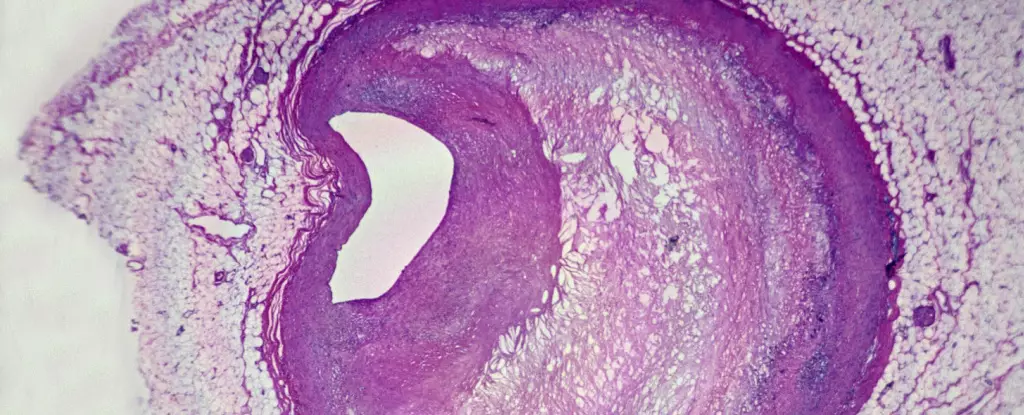In recent years, the prevalence of plastics in our environment has become alarmingly evident. Microscopic particles have infiltrated ecosystems, and recent studies revealed their unsettling presence in human tissues, including vital organs. This pervasive contamination prompts serious concern about the potential health risks associated with microplastics, particularly regarding cardiovascular wellbeing. Researchers are intensifying their efforts to investigate the implications of these minuscule plastic particles, but there remain significant gaps in our understanding, especially concerning human health outcomes.
Current research endeavors employ various models, ranging from miniaturized organ systems to animal studies, to gauge the implications of microplastics on human physiology. However, one major limitation exists: the concentrations and exposure levels examined in laboratory settings often do not accurately represent real-world scenarios. Consequently, while preliminary studies provide important insights, they may fall short of painting an accurate picture of microplastics’ impact on human health. A recent investigation from Italy shone a light on this issue by examining patients battling cardiovascular diseases, specifically those undergoing a carotid endarterectomy—a procedure aimed at addressing clogged arteries.
Led by medical researcher Raffaele Marfella from the University of Campania in Naples, the study involved an analysis of fatty deposits extracted from the arteries of 257 participants. Shocking revelations emerged, revealing that nearly 60% of the patients exhibited measurable amounts of polyethylene—a type of plastic primarily used in packaging—and about 12% showed signs of polyvinyl chloride (PVC) within their arterial plaques. The presence of these microplastics raised urgent questions about their potential role in adverse cardiovascular events. PVC, widely recognized for its application in construction and packaging, was found alongside polyethylene, which dominates the plastic market in various consumer products.
The research team sought to establish a correlation between microplastics and cardiovascular events, including strokes and heart attacks, during a follow-up period of 34 months. The findings were striking: patients with detectable microplastics in their arterial plaques exhibited a 4.5-fold increase in the likelihood of experiencing severe cardiovascular incidents or mortality compared to those without microplastics. Such a significant association raises red flags, igniting concern among health professionals regarding the interplay between microplastics and heart health.
Animal studies have previously hinted at the damaging effects of microplastics, suggesting they instigate inflammation, oxidative stress, and even disrupted heart functionality in laboratory mice. The concern has escalated, prompting researchers to analyze biological markers and the nature of these plastic particles in human tissue. Under high-powered microscopy, fragments of plastic were discernible within immune cells known as macrophages, correlating with heightened levels of inflammatory markers present in patients burdened with microplastics.
Correlation vs. Causation: A Complex Relationship
It is crucial to emphasize, however, that the observational nature of this study cannot definitively assert that microplastics are a direct causative factor behind the observed increases in cardiovascular risks. Other lifestyle and environmental factors—including smoking habits, lack of physical activity, and pollution—were not accounted for, leaving room for alternative explanations. Nevertheless, the detection of microplastics and their association with inflammatory responses in cardiovascular tissue is groundbreaking and merits further exploration.
As emphasized by Philip J. Landrigan, a noted pediatrician and public health expert, the implications of microplastics in human health create an urgent need for further research aimed at understanding how to mitigate exposure. The production of plastic has surged exponentially over the past two decades, and a worrying fraction remains unrecycled, compounding environmental contamination and potential health risks. Alarmingly, as the global burden of cardiovascular disease continues to evolve, understanding how plastic exposure fits into this public health crisis becomes imperative.
Ultimately, the investigation into the health impacts of microplastics is still in its infancy. The observations drawn from the Italian study signal a pivotal breakthrough, raising numerous questions that necessitate immediate scrutiny. While antibiotics may combat bacterial infections and lifestyle changes can improve heart health, addressing the hidden threats of microplastics demands collective action across disciplines. It is crucial to prioritize future research initiatives that target both environmental and health implications of plastics, ensuring that our understanding evolves to better safeguard public health in a plastic-saturated world.


Leave a Reply